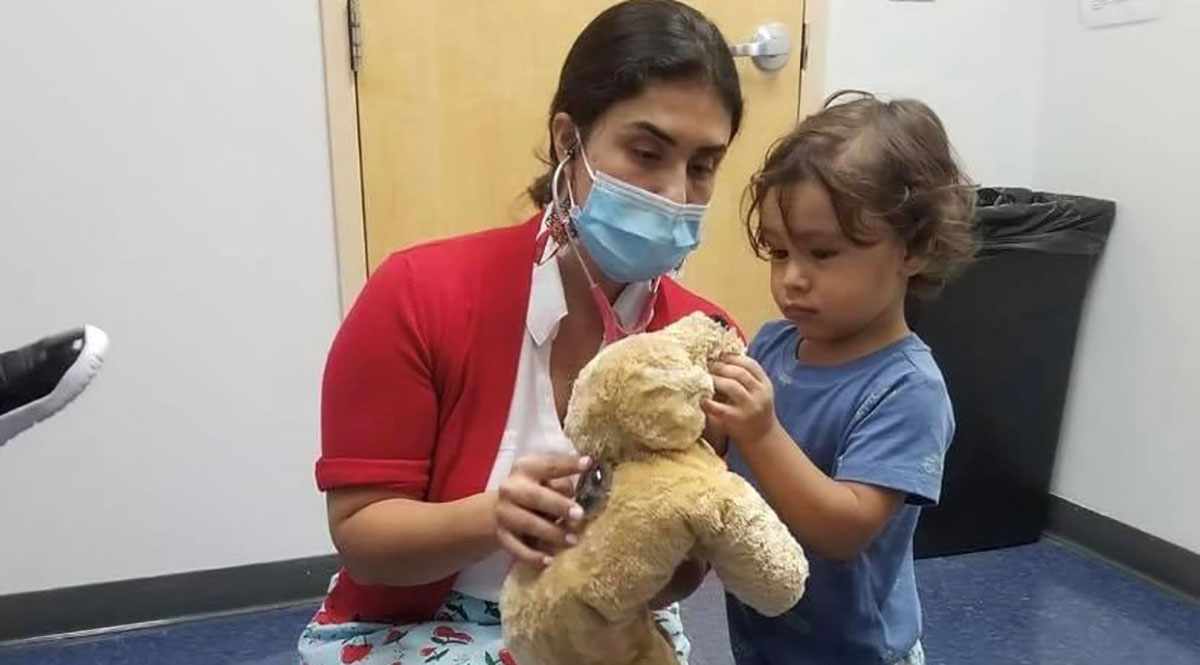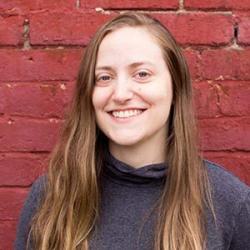
As the child of Colombian immigrants living in Chicago, Paola Portela, MD, grew up getting her health care at government-funded clinics. The experience made such an impression on her that she decided she would become a doctor someday and care for people who had similar experiences to her and her family.
“I said, ‘Mom, I’m going to do this,’” she recalls. “‘I’m going to speak to people in my language. I’m going to serve the people I grew up with.’”
Portela went on to become a physician, and after completing a residency in pediatrics at the University of Illinois College of Medicine, she took a job in the suburbs. But then she realized that she had strayed from her original reason for becoming a doctor.
That revelation pushed her to accept a job at the Infant Welfare Society of Chicago, a community health center that is less than a mile away from where she grew up in the primarily Hispanic-populated Logan Square neighborhood. Now, as the center’s chief medical officer, she serves children who go to the same elementary school she once attended.
Because the health center provides primary care in an area that has a shortage of health care professionals, Portela had the opportunity to apply to the National Health Service Corps’ (NHSC’s) loan repayment program and was accepted.
The NHSC is a federally funded program of the Health Resources and Services Administration (HRSA) that was created in the 1970s to fill gaps in primary care in underserved urban, rural, and tribal communities. The program offers scholarships to health professions students who commit to working in underserved communities after completing their training. It also offers several loan repayment programs to those who are already working in qualifying primary care and substance use disorder treatment centers. Since these centers often can’t offer salaries to compete with practices that have more resources, the option to relieve student debt can help those who want to work in these areas be more financially secure.
“Economically, when you go to work in community health, you know you’re not going to be paid as much as someone who is working for a for-profit institution,” says Jonathan Wells, MD, who qualified for an NHSC loan repayment program while working at Neighborcare Health at High Point in Seattle, where he is now associate chief medical officer. “[The program] helped me make economic choices and made it easier for me to be present for my patients.”
Students who are awarded scholarships can have their health professions school tuition and fees covered — and receive a monthly stipend — in exchange for committing to two years of service at a qualifying health center for the first year and one year of service for each year of tuition paid after that. Those already in their final year of medical school can receive up to $120,000 in tuition payments for their commitment to serve three years when they complete medical training. And health professionals working in qualifying health care centers can receive loan repayment up to $50,000 for a commitment to work full time for two years in primary care, up to $75,000 for three years working in substance use disorder treatment, or up to $100,000 for three years working in substance use disorder treatment in an underserved rural area. They can also apply for more than one cycle of loan repayment to pay off additional debt.
Since its inception, the program has supported more than 63,000 health professionals in providing care to underserved populations. Currently, the NHSC workforce includes 16,000 clinicians — including physicians, dentists, nurse practitioners, and licensed clinical social workers — who are regularly serving 17 million people across the United States.
“Economically, when you go to work in community health, you know you’re not going to be paid as much as someone who is working for a for-profit institution. [The program] helped me make economic choices and made it easier for me to be present for my patients.”
Jonathan Wells, MD
Associate chief medical officer of Neighborcare Health at High Point in Seattle and an NHSC loan repayment recipient
Still, because HRSA funds are limited, 43% of the 11,102 new applicants to the NHSC program in 2020 were not selected, according to a recent Government Accountability Office report. The report also found that nearly 1,000 applicants to the loan repayment program last year were denied because they served in relatively less severe shortage areas, rather than because they were ineligible.
But this year, the NHSC expects to give out the most financial awards in its history after Congress designated $800 million in additional funding to help expand the program as part of the American Rescue Plan stimulus package. Applications closed in March and those who are selected will be notified by the end of September. For health care facilities that want to be designated as NHSC-eligible sites and have the opportunity for their staff to receive financial aid in the future, HRSA is accepting applications through July 1, 2021.
“The increased funding for NHSC is a great way to get more physicians into HPSAs [health professional shortage areas] and serving our most vulnerable patients,” explains Brett Roude, a legislative analyst for the AAMC, which advocated for the additional funding. “It’s a really great incentive program that not only benefits the physician with the loan repayment or scholarship but also underserved communities.”
Empowered to follow their passion
As of 2019, medical students graduated with a median of $200,000 in student debt, according to the AAMC. For some students, this burden can create pressure to choose specialties and take jobs that are more lucrative than working in primary care for underserved areas. For many physicians, the NHSC provides some financial security to allow them to pursue the work they are passionate about.
“I couldn’t afford medical school, and I knew I wanted to do primary care,” says Jessie Gaeta, MD, chief medical officer of Boston Health Care for the Homeless Program, who received an NHSC scholarship to complete medical school. “I had a bunch of experiences in childhood that shaped that desire related to family members who were sick and their experience of the health care system not being great.”
Gaeta started her service at Boston Health Care for the Homeless Program, and 19 years later, she’s still there, focusing on substance use disorder treatment among those experiencing homelessness.
After completing her medical training in 2013, LeKeyah Wilson, MD, was eager to serve her community at Rochester Regional Health in New York as a pediatrician, but she worried about how she could afford to do so while caring for her young family. She explains that the NHSC loan repayment program helped her to feel less pressured to find a higher paying job that she was less passionate about.
“It’s not something I did for just a short amount of time or just to get some loans paid off. This is my life and my career.”
Crysta Chatman, MD
Medical director for quality at Unity Health Care in Washington, D.C., and an NHSC scholarship recipient
“I graduated with a substantial amount of student debt,” Wilson says. “So being awarded this definitely allowed me to pay down my debt and be able to practice medicine in my passion of serving the underserved and doing community work.”
The scholarship program also helped Crysta Chatman, MD, feel free to follow her dream of working with communities like the one she grew up in.
“My mom raised myself and my two siblings by herself,” she notes. “Whenever I went to the doctor … I never really saw anyone who looked like me. I knew that I wanted to go into medicine, and my goal was always to serve the underserved community.”
Chatman says that she had been worried about the burden of paying off her student debt while working in an underserved community, knowing that she likely wouldn’t make as much money as many of her peers. Still, she was committed to her work, with or without the financial aid.
“It’s not something I did for just a short amount of time or just to get some loans paid off,” she explains. “This is my life and my career.”
Building relationships
In her work at Unity Health Care in Washington, D.C. — a network of community health centers that are also teaching centers for the next generation of physicians — Chatman says her patients feel like family. When she calls, they often recognize her voice before she identifies herself. And she’s earned the trust of some families enough that she treats multiple generations, from pregnant people to great-grandparents.
“It’s fulfilling. It’s more than any salary can pay you. When I’m 80 years old and in a nursing home, what’s going to matter is how I changed people.”
Paola Portela, MD
Chief medical officer of the Infant Welfare Society of Chicago and an NHSC loan repayment recipient
“It’s not the most glamorous field of medicine, but the difference you make every day being a family doctor — that stays with people throughout their lives," she explains.
It was important to Wells to make sure he built his practice on relationships with his patients.
“You build trust with time,” he says.
And being there makes a difference. Wells recalls a time when he attended the funeral of a young patient who had died suddenly. The patient’s family continues to come to him for their medical care because of the trust he built by showing up, he says.
Portela is proud of the fact that many of her pediatrics patients don’t even realize she’s their doctor at first. Because she speaks their language and comes from their community, they feel more at ease. She believes it helps them be more open to following medical advice, resulting in a healthier community.
“It’s fulfilling. It’s more than any salary can pay you,” she says. “When I’m 80 years old and in a nursing home, what’s going to matter is how I changed people.”
